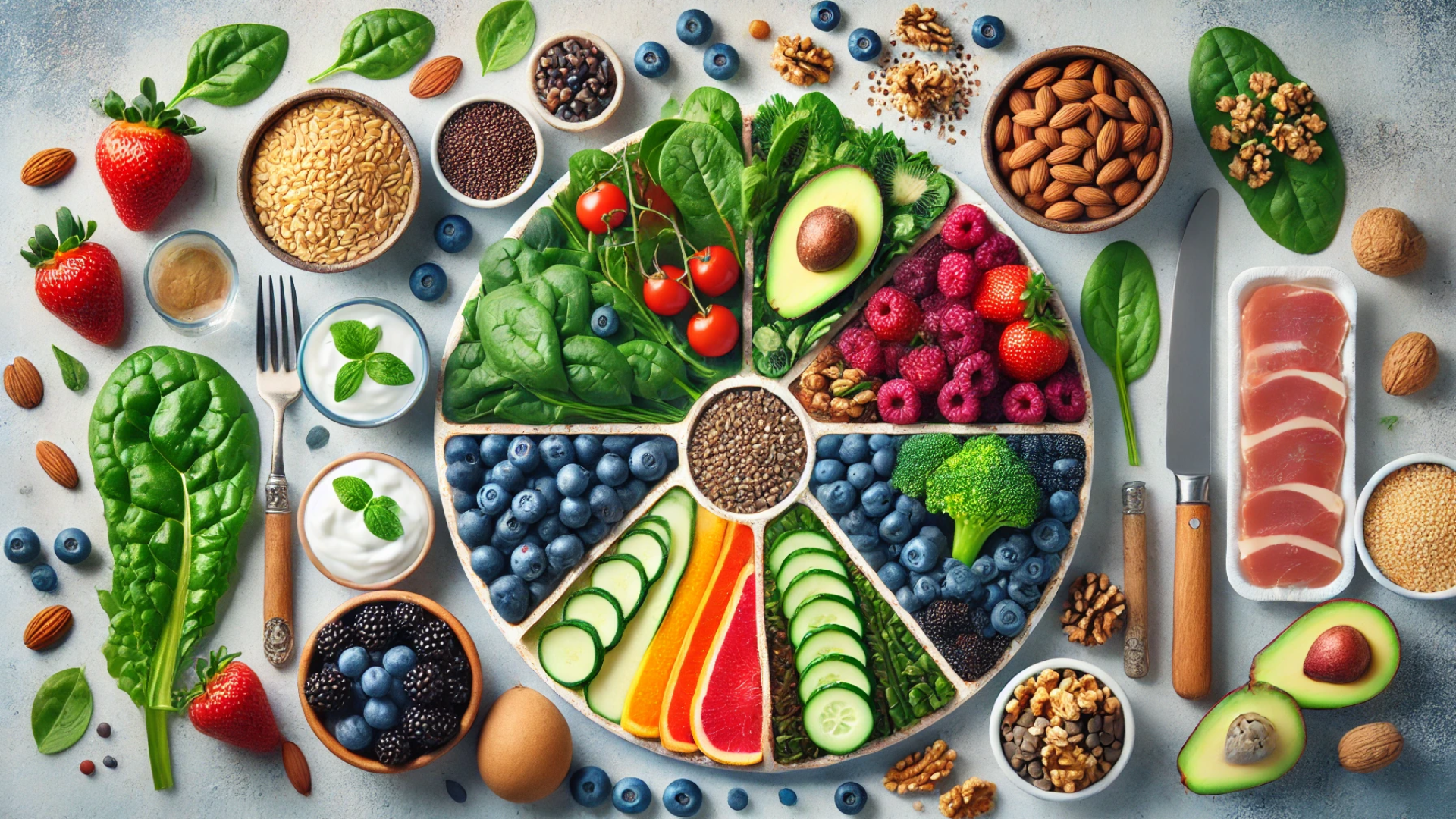
Managing Diabetes Mellitus, whether it’s Type 1, Type 2, or gestational, requires a comprehensive approach that includes lifestyle changes, regular exercise, and, most importantly, a well-planned diet. But let’s face it – with so much conflicting information out there, it can be tough to figure out what you should actually be eating. In this post, we’re going to dive into the must-eat foods for Diabetes Mellitus, helping you understand how to maintain balanced blood sugar levels while enjoying delicious, satisfying meals.
Must-Eat Foods for Managing Diabetes Mellitus
Managing diabetes doesn’t mean you have to give up on flavor or satisfaction. Here’s a comprehensive list of foods you should consider including in your diet:
Leafy Greens
Leafy greens like spinach, kale, and Swiss chard are excellent choices for people with diabetes. They’re low in calories and carbohydrates, yet packed with essential vitamins, minerals, and fiber.
- Why they’re great: These veggies are rich in antioxidants such as lutein and zeaxanthin, which help protect your eyes from diabetes-related complications. They also have a low glycemic index (GI), meaning they have a minimal impact on blood sugar levels.
- How to include them: Add them to salads, smoothies, soups, or stir-fries. They can be a perfect base for any meal or a nutritious side dish.
Whole Grains
Whole grains like quinoa, brown rice, and oatmeal are much better for blood sugar control compared to their refined counterparts.
- Why they’re great: Whole grains are packed with fiber, which slows down the digestion process, leading to a gradual release of glucose into the bloodstream. This helps in maintaining stable blood sugar levels.
- How to include them: Swap out white rice for brown rice, or use whole grain bread instead of white bread. Oatmeal can make a fantastic breakfast, especially when topped with some nuts and berries.
Berries
Berries, including strawberries, blueberries, raspberries, and blackberries, are excellent fruit options for people managing diabetes.
- Why they’re great: Berries have a lower glycemic index than many other fruits, meaning they have less impact on blood sugar levels. They’re also packed with fiber, vitamins, and antioxidants, which are beneficial for overall health.
- How to include them: Enjoy them fresh as a snack, add them to your morning yogurt, or include them in smoothies.
Nuts and Seeds
Nuts and seeds such as almonds, walnuts, chia seeds, and flaxseeds provide healthy fats, protein, and fiber, making them an excellent snack option.
- Why they’re great: They help keep you full and satisfied while providing essential nutrients without spiking blood sugar levels. Some studies have shown that regular consumption of nuts can improve blood sugar control and lower LDL cholesterol.
- How to include them: Snack on a handful of nuts, add seeds to your salads or smoothies, or use them as a topping for yogurt and oatmeal.
Legumes
Legumes, including beans, lentils, and chickpeas, are a great plant-based protein source that helps regulate blood sugar levels.
- Why they’re great: They have a low glycemic index and are rich in fiber, which can help control blood sugar spikes. Additionally, they’re versatile and can be used in a variety of dishes.
- How to include them: Use beans in soups, stews, or salads. Make a chickpea hummus or a hearty lentil curry.
Greek Yogurt
Greek yogurt is a nutrient-dense dairy option that can be a part of a diabetes-friendly diet.
- Why it’s great: It’s higher in protein and lower in carbs compared to regular yogurt. Probiotics in yogurt can also help improve gut health, which is linked to better blood sugar management.
- How to include it: Enjoy Greek yogurt as a snack, or use it as a base for smoothies. You can also use it as a topping for fruit or as a creamy salad dressing.
Practical Tips for Meal Planning
Planning your meals when you have diabetes can feel overwhelming, but it doesn’t have to be. Here are some tips to make it easier:
- Balance Your Plate: Aim for a balanced plate with a quarter filled with lean protein, a quarter with whole grains, and half with non-starchy vegetables.
- Mind the Portions: Keep an eye on portion sizes, especially with foods that can impact blood sugar levels like grains and starchy vegetables.
- Stay Hydrated: Drink plenty of water throughout the day. Avoid sugary drinks and limit your intake of fruit juices.
- Read Labels: When buying packaged foods, read the nutrition labels to check for added sugars and unhealthy fats.
- Meal Prep: Prepare meals in advance to avoid the temptation of fast food or unhealthy snacks when you’re hungry.
It’s here Best Foods to Eat for Cardiovascular Disease
FAQ’S
1. Can I eat fruit if I have diabetes?
Absolutely! Focus on fruits with a low glycemic index, such as berries, apples, and pears. Just be mindful of portion sizes and try to pair fruit with a source of protein or fat to minimize blood sugar spikes.
2. Is it okay to eat carbs?
Yes, carbs are an important part of a balanced diet, even for people with diabetes. Opt for whole grains and complex carbohydrates that provide fiber and other nutrients.
3. How often should I eat?
It’s typically recommended to eat small, balanced meals throughout the day to help manage blood sugar levels. However, you should work with a healthcare professional to determine the best eating schedule for you.
Wrapping Up
Managing Diabetes Mellitus through diet doesn’t mean you have to sacrifice flavor or satisfaction. By including nutrient-dense foods like leafy greens, whole grains, fatty fish, berries, nuts, seeds, legumes, and Greek yogurt, you can enjoy a varied and delicious diet while keeping your blood sugar levels in check. Remember, the key is to balance your meals, monitor your portions, and choose foods that are lower on the glycemic index. With these tips in mind, you’re well on your way to better managing your diabetes through mindful eating.

